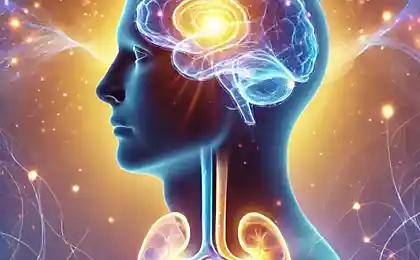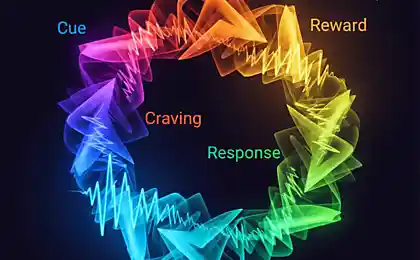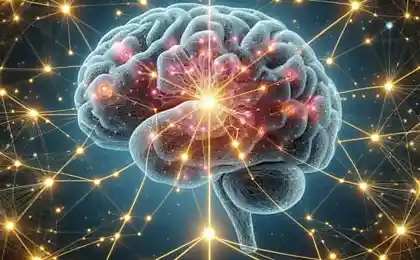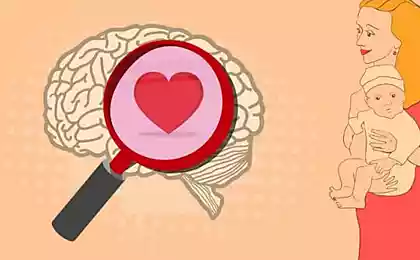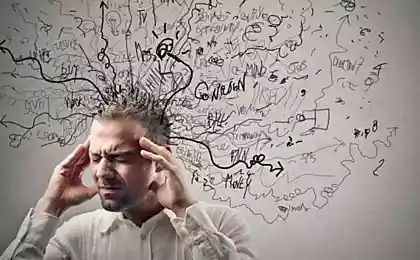319
6 habits that will help you stop reacting to problems

In today’s world of stress and uncertainty, the ability to maintain emotional balance becomes not just an advantage, but a necessary survival skill. Acute emotional reactions to problems often lead to suboptimal decisions, conflicts, and feelings of well-being. Studies show that people who are able to control their emotional reactions not only make more informed decisions, but also maintain better mental health in the long run. In this article, we’ll look at six science-based habits to help you stop reacting to problems and develop emotional resilience.
Why do we react so strongly to problems?
Before diving into practical guidelines, it’s important to understand the nature of our emotional responses. Acute problem response has an evolutionary basis – it’s part of our ancient fight-or-flight mechanism, where the brain lightningly assesses a situation as threatening and triggers a cascade of physiological responses.
According to research by neuroscientists, when faced with a problem situation, the amygdala is activated - the area of the brain responsible for emotional reactions. This happens before the information reaches the prefrontal cortex, which is responsible for rational thinking. We react emotionally before we have time to think about the situation.
In a study published in the Journal of Neuroscience, researchers found that people with increased amygdala activity showed more intense emotional responses to negative stimuli. At the same time, those who practiced mindfulness techniques showed increased activation of the prefrontal cortex and a weakened amygdala response, leading to calmer and more balanced responses to stressful situations.
Factors that increase the severity of our reactions include chronic stress, lack of sleep, poor nutrition, as well as deep-rooted psychological attitudes and traumatic experiences. Understanding these mechanisms is the first step to changing our emotional response.
6 Habits to Control Emotional Responses
1 Practice mindfulness and meditation
Mindfulness is the state of being fully present in the present moment without judgment. Regular practice of mindfulness helps create a pause between the stimulus (problem) and our response to it, providing space for a more balanced response.
A Harvard University study found that just 8 weeks of regular mindfulness meditation led to significant changes in brain structure, including a decrease in the volume of the amygdala (responsible for the fight-or-flight response) and an increase in gray matter density in areas associated with attention and sensory information processing.
Practical advice: Start with 5 minutes of daily meditation, gradually increasing the time to 15-20 minutes. Focus on the breath, and when thoughts lead you away, gently return attention to the breath without self-criticism. Use meditation apps or online courses to support regular practice.
2 Developing Emotional Intelligence

Emotional intelligence is the ability to recognize, understand and manage both your own emotions and those of others. High levels of emotional intelligence allow us to better identify emotional triggers and choose more constructive ways to respond.
Psychologist Daniel Goleman, the author of the concept of emotional intelligence, identifies four of its components: self-awareness, self-management, social awareness and relationship management. The development of each of these aspects contributes to a more harmonious emotional life.
Practical steps to develop emotional intelligence:
- Keep a diary of emotions, writing down situations, your reactions and consequences
- Practice naming emotions with specific words: instead of “bad” or “good”, use more precise definitions (“disappointed”, “encouraged”, “alarmed”).
- Learn Your Emotional Patterns: Which Situations Cause the Most Acute Responses?
- Practice active listening with others
3 Cognitive reassessment techniques
Cognitive reassessment is a strategy of emotional regulation in which we change our interpretation of a situation to change the emotional response to it. Studies show that people who regularly use this technique show lower levels of stress and depression.
Cognitive reassessment is based on the principle that it is not the events themselves that trigger our emotions, but our interpretation of those events. By changing our perspective on the problem, we can change our emotional response.
How to practice cognitive reassessment:
- When a problem arises, ask yourself, “Is there any other way to look at this situation?” ?
- Imagine what you would advise a friend in a similar situation.
- Ask yourself, “Will it matter in a year?”
- Look for a potential benefit or lesson in the situation.
“There is space between stimulus and response. In this space lies our power to choose our response. Our response is our growth and our freedom.” - Victor Frankl.
4 Regular physical activity
Physical activity is one of the most effective natural regulators of emotional state. During exercise, our body produces endorphins, serotonin and dopamine – neurotransmitters that improve mood and reduce stress levels.
According to a study published in the journal Frontiers in Psychology, regular exercise not only reduces current levels of stress, but also increases the threshold of emotional reactivity, making us less susceptible to stressful situations in the future.
Recommendations for physical activity:
- Aim for 150 minutes of moderate activity per week (such as 30 minutes five days a week)
- Choose activities that bring pleasure: walking, running, yoga, dancing, swimming
- If there is an acute emotional reaction, use short physical exercises to discharge: walking, squats, push-ups.
- Practice exercise with mindfulness elements, such as yoga or tai chi
5 Deep Breathing and Relaxation Techniques

Our breathing is directly connected to the nervous system and can serve as a powerful tool for regulating our emotional state. When stressed, breathing becomes shallow and frequent, activating the sympathetic nervous system ("fight or flight"). Deep, slow breathing activates the parasympathetic nervous system (“rest and recovery”).
Studies show that regular practice of deep breathing techniques leads to lower levels of cortisol (the stress hormone) and increased heart rate variability, an indicator of cardiovascular health and the ability to adapt to stress.
The technique of diaphragmatic breathing "4-7-8":
- Take a breath through your nose on count 4
- Hold your breath on count 7.
- Exhale slowly through your mouth on count 8
- Repeat the cycle 4-6 times
6 Development of the practice of gratitude
Practicing gratitude is a regular conscious focus on the positive aspects of life and expressing appreciation for them. Studies show that this practice not only improves overall emotional state, but also contributes to the development of psychological resistance to stressful situations.
Neurobiological studies show that regular practice of gratitude activates areas of the brain associated with positive emotions and social connectedness, while reducing activity in areas associated with negative emotions and stress.
How to implement the practice of gratitude:
- Keep a gratitude journal, writing down 3-5 things you are grateful for every day.
- Practice expressing gratitude to others, both verbally and in writing.
- Before going to bed, mentally list the events of the day for which you feel grateful.
- In times of stress, try to find at least one aspect of the situation for which you can be grateful.
Integrating habits into everyday life
Learning to control emotional reactions is not a one-time action, but a process that requires consistency and patience. It is important to integrate these habits into your daily life, gradually transforming automatic responses into conscious responses.
According to habit-forming research, it takes an average of 66 days to establish a new behavior. However, this period can vary from 18 to 254 days, depending on the complexity of the habit and individual characteristics. The key to success is consistency and regularity of practice.
Start by choosing one or two habits that resonate with you the most. When they become part of your routine, add new practices. It’s important to remember that perfection is not a goal – aim for progress, not an ideal.
A useful approach can be a method of tracking habits – keeping a diary or using special applications to record your practices and observe changes in emotional reactions. This approach not only increases motivation, but also allows you to notice even small positive changes.
Conclusion
The ability to control acute emotional reactions to problems is a skill that can be developed through conscious effort and regular practice. The six habits examined—practicing mindfulness, developing emotional intelligence, cognitive reassessment, physical activity, breathing techniques, and cultivating gratitude—represent an integrated approach to emotional self-regulation.
Remember that transforming emotional responses is a journey, not a destination. Be patient with yourself, celebrate even small successes, and don’t judge yourself harshly for moments when emotions take over. With each practice, you strengthen the neural pathways responsible for emotional resilience and gradually change the patterns of response that have been laid down for years.
In a world where stress and uncertainty become an integral part of life, the ability to maintain emotional balance in difficult situations becomes not just a useful skill, but a prerequisite for psychological well-being and quality of life in general.
Glossary of terms
Emotional intelligence
The ability to recognize, understand, and manage one’s emotions, and to recognize, understand, and influence others’ emotions.
Cognitive reassessment
A psychological strategy of emotional regulation in which a person changes the way they interpret a situation to change their emotional response to it.
Mindfulness (mindfulness)
Psychological practice aimed at the development of full presence in the current moment, acceptance and impartiality to what is happening.
Almond-shaped body (amygdala)
The area of the brain responsible for processing emotions, especially those associated with fear and threat, and involved in triggering the fight-or-flight response.
Prefrontal cortex
The brain area responsible for executive functions, including decision-making, planning, emotion regulation, and social behavior.
Parasympathetic nervous system
The department of the autonomic nervous system responsible for the state of rest, recovery and rest, the opposite of the sympathetic system (fight or flight reaction).
Neuroplasticity
The ability of the brain to change its structures and functions in response to experience, learning and practice, forming new neural connections and adapting to changing conditions.
What it means to do the right thing and why it is so difficult
What is the power of personal beliefs and how to strengthen them

